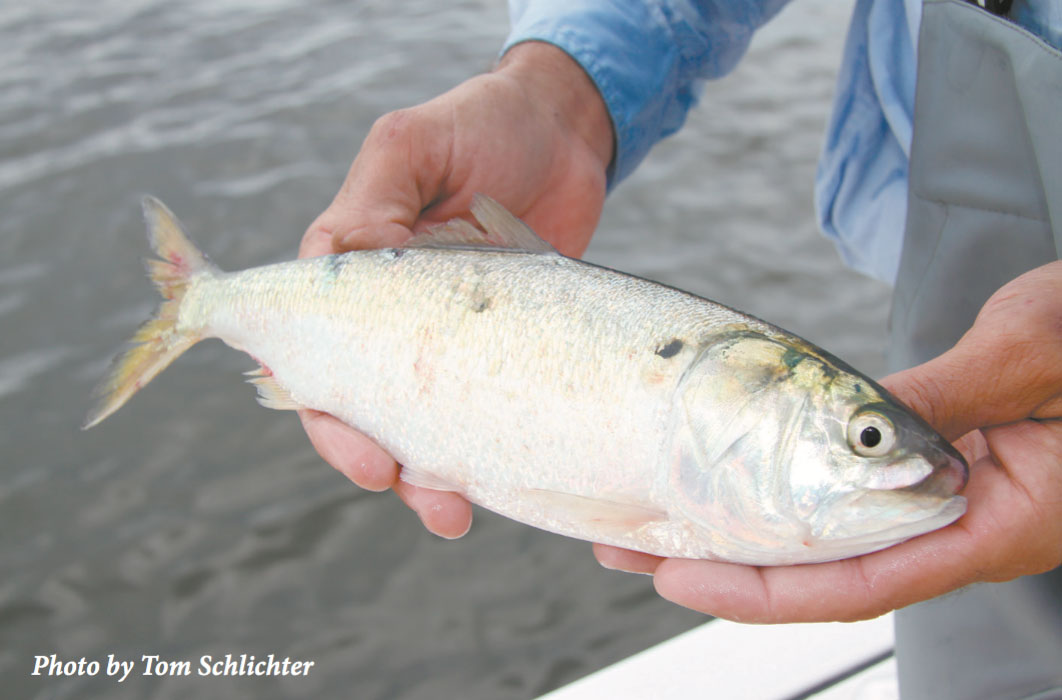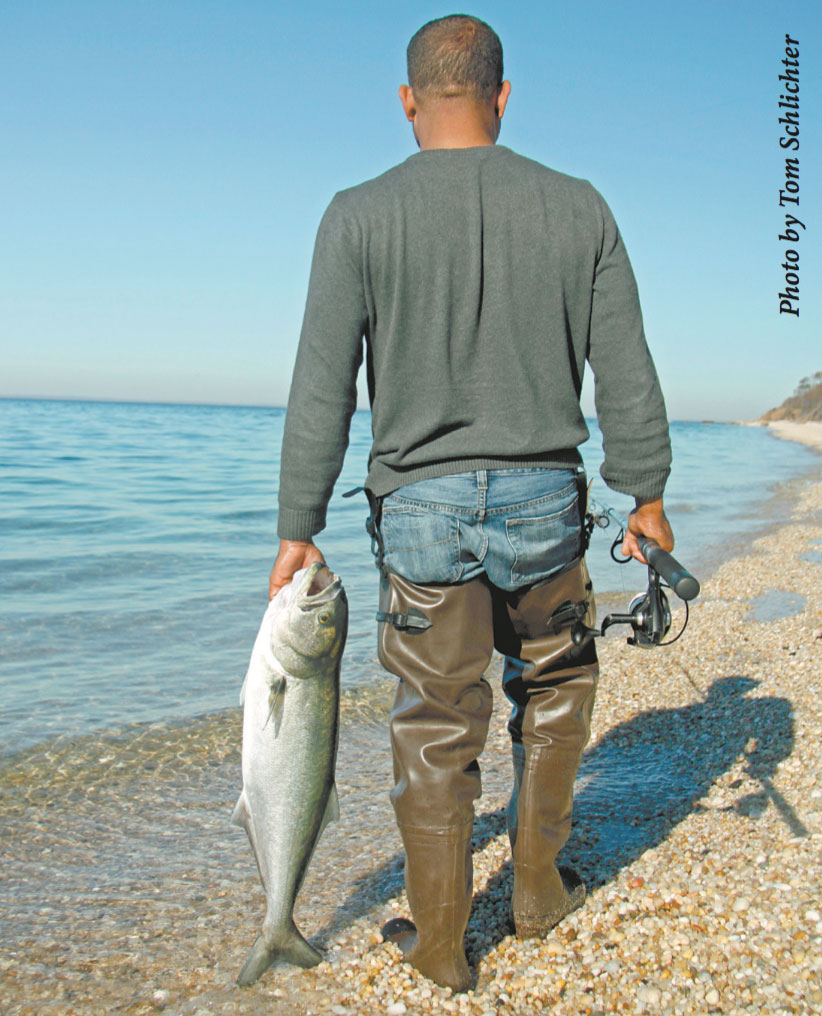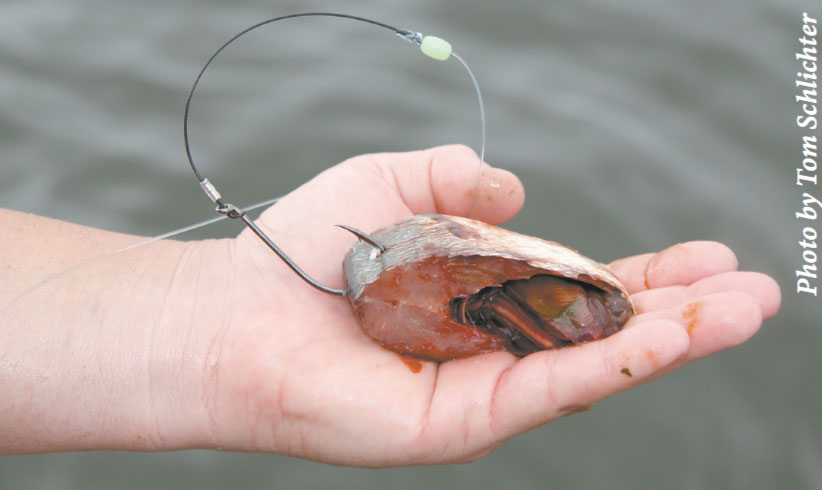August Sings the Blues
Like it or not, bluefish are the focal point for many Long Island Sound anglers during the month of August. Sure, you can wait out the stripers with chunks at the Middle Grounds, or probe 25- to 50-foot depths looking for a keeper fluke or two that’s managed to slip through the drifting armada outside of each and every harbor. You might even consider adding to the pile of porgy and sea bass fillets in your freezer or taking the family snapper fishing. But for slamming, rod-bending, fight ‘till you win – or lose- late summer action, the mighty bluefish rules supreme. Best of all, you can catch them this month in a variety of interesting ways and settings from Throgs Neck all the way east to Orient Point.
Often maligned by striper and, occasionally, even fluke fans, bluefish are the Rodney Danger Fields of local fishing. They should get more respect. After all they fight like crazy at every size and provide plenty of action when just about everything else in Long Island Sound is mired in the summer doldrums. Even better, the choppers that invade the harbors this time of year are some of the heftiest you’ll ever see. Eight- to ten-pound ‘gators are routine and some of these harbor tackle-busters push the 20-pound mark. Over the past few years, some of these big boys have also decided to crash open beaches giving shore casters a real thrill – or sliced lines and lost rigs.
Although it is possible to tempt choppers inside most North Shore harbors using surface plugs and tins, the biggest often fall to simple bunker chunks. From Port Washington Harbor and Manhasset Bay to Oyster Bay, Glen Cove, Hempstead, Northport, Port Jefferson and even tiny Mount Sinai harbors, bluefish reliably inhale cut bunker even when the silver baitfish aren’t around.
If fishing from a boat, begin your bluefish assault by rigging several sturdy conventional-20-pound setups with a four-inch length of wire connected to a 7/0 – 9/0 Gamakatsu Octopus style hook. Add an in-line float to help keep his bunker chunks above the crabs. Leave one line weightless to float at mid-depths while another rig or two receive a varying number of split shots to keep them closer to the bottom around moorings, channel edges, ledges and shoal drop-o s. Surfcasters can use a standard bottom rig with similar hooks, an in-line oat and a pyramid style sinker to anchor everything on a sandy bottom. If fishing amongst rocks or near heavy structure, however, opt instead of bank sinkers.
August blues enter the harbors in search of bunker specifically but will tear into any baitfish they can find. Most of the time, cut bait will be enough to get you into the fish but when it gets really hot and the choppers are most “picky,” swimming live baits can tip the odds in your favor. The key to hooking-up with monsters, however, is to try this at dawn when water temperatures are coolest. Count to five at least before trying to stick any fish that picks up a bait, and work the outside edges of ledges and shoals where upwelling water is cooler than on the flats.
Of course, there are plenty of bluefish outside the harbors as well – and if you don’t have your own means to get out on the water it might be time to consider an open boat or charter trip for the choppers. This is one kind of fishing where these vessels excel as the more lines that are in the water, the more the blue sh seem to get excited.
“We hit the blues every afternoon in August,” says Captain James Schneider of the open boat Captain James Joseph II, and the charter vessel James Joseph III (www.jamesjosephfishing.com; 631-680-8159.) “Once the butterfish and squid set up inside the Eaton’s Neck Triangle or at Cable and Anchor Reef o Norwalk, they just don’t leave. It’s a slam most trips with fish ranging from cocktails to 18 pounds. From the Long Island side, think of the Obstruction Buoy, 11B and 28C as being your starting points.”
The thing I find most interesting about this fishing is that the blues, once settled in, rarely vanish. Even when the tide changes, all they do is slide over to the opposite side of the reef or hump. It’s a very consistent pattern.
“That’s true,” notes Schneider. “The bluefish here always face into the tide. So, then, on outgoing water we work the west side and on incoming water we hit the east side. It’s really pretty simple once you figure that out. Mostly we use diamond jigs here, but you can chunk and, if you are on a private or charter boat, trolling right across the reef during slack water can put you on some bruisers. Troll parachute lures behind 200-feet of wire line for gorillas, or drag an umbrella rig to target smaller fish at a break-neck pace.”
As for the diamond jigging, Schneider advises anglers to choose the lightest weight that will get down to the bottom. Lighter diamonds, he believes, have more flutter to their action and, thus, appear to be more alive. Generally speaking, a three-ounce diamond is perfect; bump it up to four ounces on moon tides.
“Just like with fluke fishing,” states Schneider unequivocally,” lighter jigs fool more fish. Get ‘em down, crank up quickly for about ten turns of the reel handle, and repeat. Set the hook hard on the strike.”
Make sure not to set your drag too tight, work politely with your rail mates to avoid tangles, and don’t crank when the fish is taking line. Keep these three points in mind and you’ll win most of your bluefish battles.
Of course, there are plenty of other ways to connect with aggressive blues. One of my favorites is to simply work the Long Island Sound beaches between Wading River and Riverhead at dawn and dusk. The key here is to watch for bait. Strong winds from the WNW tend to push sand eels, rain bait and spearing up against Long Island’s northern shore, and the choppers often follow.
Although they can show up just about anywhere, I give a slight edge to the more sandy stretches, perhaps because these tend to hold the sand eels a bit longer. When these blues show, you’ll generally find them willing to smack white, blue or yellow surface poppers. You can also tempt them with two-ounce tins such as a Hopkins Shorty or an AVA diamond jig. Of course, bunker chunks will work as well if you are willing to play the bait and wait game.
Occasionally, under overcast skies, big blues will silently lurk in the waters off these beaches without offering even the slightest hint of their presence. So, if all seems right yet there are no signs of choppers, pretend you are back in a west end harbor and play the bait and wait game with a chunk of bunker. Or try slowly dragging a diamond jig across the bottom at a speed usually reserved for tempting fluke with soft plastics or bucktails. I’ve caught some of my biggest blues in recent years using this technique.
If the choppers still won’t sing, keep in mind that this is August and you can always go for a swim. The summer doldrums will be history in just a few more weeks and the blitzes of autumn will soon come knocking at the door.












